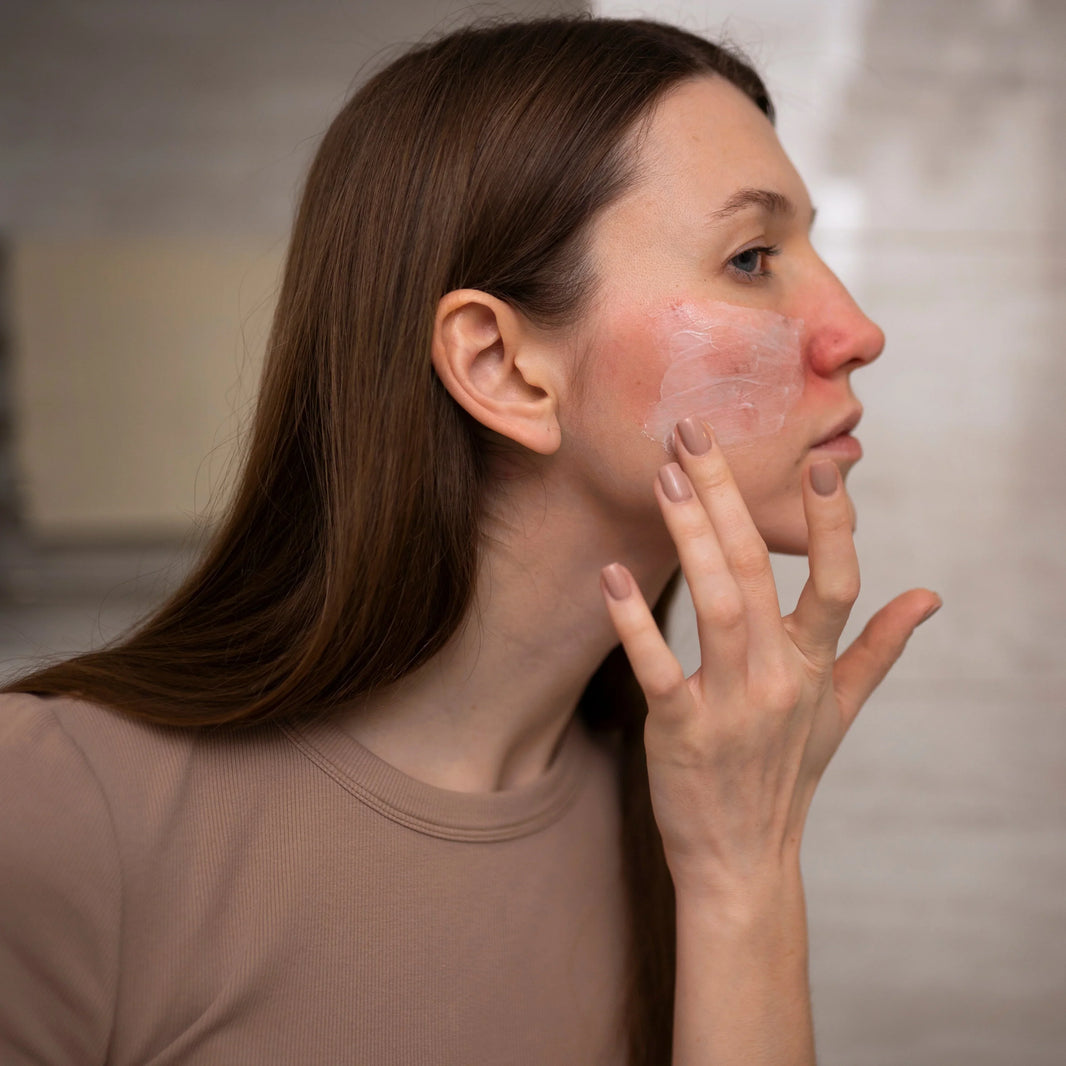Benign prostatic hyperplasia (BPH) represents a significant health concern among aging males worldwide, characterized by non-malignant enlargement of the prostate gland. This condition frequently leads to lower urinary tract symptoms (LUTS) and acute urinary retention (AUR), substantially diminishing quality of life for affected individuals. As one of the most prevalent urological conditions in elderly men, BPH warrants comprehensive understanding of its underlying mechanisms and evidence-based treatment approaches. This report examines the pathophysiology of BPH, exploring cellular and molecular mechanisms, and evaluates the spectrum of therapeutic interventions from well-established treatments to those with limited supporting evidence.
Pathophysiology and Cellular Mechanisms of BPH
Benign prostatic hyperplasia develops through a complex interplay of hormonal, inflammatory, and molecular signaling pathways that collectively drive abnormal growth of prostatic tissue. Understanding these multifaceted mechanisms provides insight into potential therapeutic targets and explains the variable response to different treatments observed clinically.
Hormonal Regulation and Androgen Signaling
The androgenic hormones, particularly testosterone and its metabolite dihydrotestosterone (DHT), serve as pivotal regulators of prostate growth. DHT, which is formed from testosterone through the action of the enzyme 5α-reductase, binds to androgen receptors (AR) with greater affinity than testosterone. This binding initiates transcriptional activities that promote cellular proliferation and inhibit apoptosis in prostatic tissue4. The androgen-dependent signaling cascade is central to the development of prostatic hyperplasia, explaining why interventions targeting this pathway have become standard therapeutic approaches. Research has demonstrated that DHT levels remain elevated in the prostatic tissue of patients with BPH, even when circulating testosterone levels may be declining with age, suggesting localized dysregulation of androgen metabolism8.
Inflammatory Processes and Immune Cell Involvement
Chronic inflammation has emerged as a critical factor in BPH pathogenesis. Histological studies consistently show immune cell infiltration in prostatic tissue from BPH patients, with T lymphocytes and macrophages being particularly prevalent. This inflammatory milieu contributes significantly to tissue remodeling and stromal proliferation4. Recent findings indicate a bidirectional relationship between androgens and inflammation, wherein DHT can activate chronic inflammatory responses in prostatic tissue, amplifying the expression of inflammatory mediators and cytokines, which in turn upregulate proliferative pathways8. Additionally, research has shown that patients with poor response to 5α-reductase inhibitor (5ARI) treatment demonstrate increased infiltration of CD3+ T cells compared to those with good treatment outcomes, suggesting that immune-mediated mechanisms may influence therapeutic efficacy12.
Growth Factor Signaling and Stromal-Epithelial Interactions
Dysregulated growth factor signaling represents another crucial dimension of BPH pathophysiology. Fibroblast growth factors (FGFs), transforming growth factor-beta (TGF-β), and other growth mediators amplify cellular proliferation and extracellular matrix deposition within prostatic tissue4. These growth factors facilitate communication between stromal and epithelial compartments, creating a microenvironment conducive to hyperplastic growth. The stromal-epithelial interactions maintain aberrant cellular proliferation through paracrine signaling networks, perpetuating the hyperplastic state even in the absence of strong exogenous stimuli4.
Molecular Signaling Pathways
Several molecular signaling pathways have been implicated in BPH development and progression. Research using WPMY-1 cells (a prostate stromal cell line) has demonstrated that compounds like resveratrol can inhibit BPH-related cell proliferation by inducing G0/G1-phase cell cycle arrest through downregulation of cyclins and cyclin-dependent kinases, which is mediated by increased expression of cell cycle inhibitors p21WAF1 and p27KIP11. Additionally, the phosphatidylinositol 3-kinase/AKT and extracellular signal-regulated kinase 1/2 pathways appear to be hyperactivated in BPH, contributing to enhanced cell survival and proliferation1. The nuclear factor-κB (NF-κB) transcription factor also plays a significant role in BPH pathogenesis by regulating inflammatory and proliferative gene expression1.
Oxidative Stress and Cellular Senescence
Emerging evidence underscores the contribution of oxidative stress and mitochondrial dysfunction to BPH development. Increased reactive oxygen species production within prostatic tissue can lead to DNA damage, cellular senescence, and genomic instability, creating an environment conducive to aberrant growth patterns4. The accumulation of senescent cells in the prostate may release pro-inflammatory cytokines and growth factors as part of the senescence-associated secretory phenotype, further driving the hyperplastic process.
Evidence-Based Treatments for BPH
The management of BPH has evolved significantly over the past decades, with several therapeutic approaches demonstrating variable levels of efficacy. Treatment options range from pharmacological interventions targeting specific pathophysiological mechanisms to minimally invasive procedural techniques.
Alpha-Adrenergic Receptor Blockers
Alpha-blockers represent one of the most widely prescribed medication classes for BPH, acting primarily by relaxing smooth muscle in the prostate and bladder neck to improve urinary flow5. These agents provide relatively rapid symptomatic relief, typically within days to weeks after initiation. Common alpha-blockers include tamsulosin, alfuzosin, doxazosin, and silodosin. While generally effective for symptom management, recent studies have raised concerns regarding the cardiovascular safety profile of alpha-blockers, particularly in elderly patients with comorbid cardiovascular conditions5. A large cohort study using Medicare data compared cardiovascular outcomes between alpha-blocker users and 5-alpha reductase inhibitor users, suggesting potentially increased cardiovascular risks with alpha-blockers, although the clinical significance requires further investigation5.
5-Alpha Reductase Inhibitors
5-Alpha reductase inhibitors (5ARIs) such as finasteride and dutasteride target the androgenic pathway by inhibiting the conversion of testosterone to DHT, thereby reducing prostate volume and disease progression12. These medications typically require longer treatment periods (3-6 months) before significant symptomatic improvement is observed. Clinical trials demonstrate that 5ARIs can reduce prostate volume by approximately 20-30% and decrease the risk of acute urinary retention and need for surgical intervention. However, despite good therapeutic effects in many patients, approximately 30-40% experience suboptimal responses and may eventually require surgical intervention12. Recent research suggests that differential treatment responses may be related to varying levels of T-cell infiltration, with greater CD3+ T cell presence associated with poorer treatment outcomes12.
Combination Therapy
Combination therapy using an alpha-blocker and a 5ARI has demonstrated superior outcomes compared to monotherapy with either agent alone in patients with larger prostates and moderate-to-severe symptoms. This approach provides both immediate symptomatic relief (via alpha-blockade) and addresses the underlying pathophysiology (via DHT suppression), resulting in greater long-term efficacy and reduced disease progression compared to single-agent therapy.
Phosphodiesterase Type 5 Inhibitors
Phosphodiesterase type 5 inhibitors (PDE5-Is), initially developed for erectile dysfunction, have emerged as effective treatments for BPH-related LUTS. Randomized controlled clinical trials have demonstrated that PDE5-Is can improve both LUTS and erectile dysfunction in men experiencing both conditions19. The mechanism appears to involve relaxation of smooth muscle in the lower urinary tract, improved pelvic blood flow, and potential anti-inflammatory effects. Tadalafil is currently the only FDA-approved PDE5 inhibitor for BPH treatment, although other agents in this class show similar efficacy in clinical studies.
Minimally Invasive Procedures
Prostate artery embolization (PAE) represents an emerging minimally invasive procedure for BPH management. This technique involves selective catheterization of the prostatic artery followed by embolization of distal vessels with variably sized beads11. Clinical studies have demonstrated PAE's effectiveness in reducing prostate volume and alleviating LUTS, providing outcomes comparable to traditional surgical approaches like transurethral resection of the prostate (TURP) but with potentially fewer complications and shorter recovery times11. The optimal particle size for embolization remains under investigation, with sizes ranging from 40-300 μm being employed in clinical practice11.
Surgical Interventions
Traditional surgical approaches, particularly TURP, remain the gold standard for BPH management in patients with severe symptoms, acute urinary retention, or those failing medical therapy. Newer surgical techniques, including various laser procedures, prostatic urethral lift, and water vapor thermal therapy, offer alternatives with potentially improved safety profiles and shorter recovery periods for selected patients.
Treatments with Limited or Emerging Evidence
In addition to established therapies, several alternative and complementary approaches have been investigated for BPH management, with varying levels of supporting evidence.
Phytotherapeutic Agents
Numerous plant-derived compounds and herbal preparations have been promoted for BPH management. Among these, Serenoa repens (saw palmetto) in hexanic extract form (Permixon) stands out as the only herbal medicine backed by high-quality clinical trial data9. This extract appears to exert anti-androgenic, anti-inflammatory, and anti-proliferative effects, although its precise mechanism of action remains incompletely understood. Other herbal products including Pygeum africanum, beta-sitosterols, and various Asian traditional formulations like Tong Guan Pill (TGP) have shown promising results in preliminary studies but lack robust clinical evidence supporting their routine use17.
Nutraceuticals and Dietary Supplements
Various nutrients and dietary supplements, including zinc, selenium, vitamin D, and omega-3 fatty acids, have been investigated for potential benefits in BPH management. Resveratrol, a polyphenolic compound found in grapes and red wine, has demonstrated promising effects in preclinical models by inhibiting prostatic stromal cell proliferation through cell cycle regulation, suppression of PI3K/AKT and ERK1/2 signaling pathways, and attenuation of NF-κB activity1. While these mechanisms suggest potential therapeutic utility, clinical evidence supporting the efficacy of most supplements remains limited, and they cannot be recommended as replacements for established medical therapies.
Anti-inflammatory Agents
Given the important role of inflammation in BPH pathogenesis, various anti-inflammatory agents have been explored as potential treatments. Non-steroidal anti-inflammatory drugs (NSAIDs) have shown some promise in preliminary studies, potentially reducing prostate volume and improving LUTS. However, long-term safety concerns regarding gastrointestinal and cardiovascular effects have limited enthusiasm for their routine use in BPH management.
Anticholinergic Medications
Anticholinergic agents are sometimes prescribed for BPH patients with predominant storage symptoms (urgency, frequency, and nocturia), particularly when combined with an alpha-blocker9. While these medications can improve certain aspects of LUTS, concerns regarding potential urinary retention in men with significant outlet obstruction and cognitive effects in elderly patients have tempered their widespread adoption for BPH treatment.
Conclusion
Benign prostatic hyperplasia represents a multifaceted condition driven by complex interplay between hormonal factors, inflammatory processes, and dysregulated cellular signaling pathways. The androgenic hormones, particularly DHT, serve as primary drivers of prostatic growth, working in concert with inflammatory mediators, growth factors, and oxidative stress to promote hyperplastic changes in both stromal and epithelial compartments. This complex pathophysiology explains the heterogeneous clinical presentations and variable treatment responses observed in clinical practice.
Current management approaches with the strongest supporting evidence include alpha-blockers and 5-alpha reductase inhibitors, either as monotherapy or in combination. Emerging evidence supports the use of PDE5 inhibitors, particularly in men with concurrent erectile dysfunction. Minimally invasive procedures like prostate artery embolization offer promising alternatives to traditional surgery for appropriate candidates. Among complementary approaches, only Serenoa repens in hexanic extract form has substantial clinical evidence supporting its efficacy, while most other herbal preparations and dietary supplements lack robust clinical data despite promising mechanistic studies.
The ongoing elucidation of molecular mechanisms underlying BPH development continues to reveal potential novel therapeutic targets. Future treatments may focus more specifically on inflammatory pathways, oxidative stress mechanisms, or precise molecular alterations identified through advanced genetic and proteomic analyses. As our understanding of BPH pathophysiology deepens, more personalized approaches to treatment selection may emerge, potentially improving outcomes for the millions of men affected by this common condition worldwide.
Citations:
- https://www.ncbi.nlm.nih.gov/pmc/articles/PMC8199399/
- https://www.semanticscholar.org/paper/205c676fab7494984e549b7b6a9bb2a638087c22
- https://www.semanticscholar.org/paper/30bebc8615227e3198beb4f31569fcf209011ed5
- https://www.semanticscholar.org/paper/c5e93d179edec92119a49f9cf0baf43246508b9a
- https://www.semanticscholar.org/paper/ff533a8211dc2407b9fa8af68991edeb134dc2d9
- https://www.ncbi.nlm.nih.gov/pmc/articles/PMC11675305/
- https://pubmed.ncbi.nlm.nih.gov/38385385/
- https://www.ncbi.nlm.nih.gov/pmc/articles/PMC7641707/
- https://pubmed.ncbi.nlm.nih.gov/38297421/
- https://www.ncbi.nlm.nih.gov/pmc/articles/PMC11452698/
- https://www.ncbi.nlm.nih.gov/pmc/articles/PMC11205146/
- https://www.semanticscholar.org/paper/24780e5aefe846e3248dc888f6c1e5b6506b464b
- https://www.ncbi.nlm.nih.gov/pmc/articles/PMC10399610/
- https://www.ncbi.nlm.nih.gov/pmc/articles/PMC9328501/
- https://www.ncbi.nlm.nih.gov/pmc/articles/PMC10328422/
- https://www.ncbi.nlm.nih.gov/pmc/articles/PMC10854775/
- https://www.semanticscholar.org/paper/ff01546a9a3be7b0070268f5c30b5302207e9f14
- https://www.ncbi.nlm.nih.gov/pmc/articles/PMC9007472/
- https://pubmed.ncbi.nlm.nih.gov/23875757/
- https://pubmed.ncbi.nlm.nih.gov/35725022/
- https://pubmed.ncbi.nlm.nih.gov/31187492/
- https://www.ncbi.nlm.nih.gov/pmc/articles/PMC10987592/
- https://pubmed.ncbi.nlm.nih.gov/39652807/
- https://www.ncbi.nlm.nih.gov/pmc/articles/PMC6798398/
- https://www.ncbi.nlm.nih.gov/pmc/articles/PMC6423146/
- https://pubmed.ncbi.nlm.nih.gov/38146664/
- https://pubmed.ncbi.nlm.nih.gov/25451715/
- https://pubmed.ncbi.nlm.nih.gov/36585197/
- https://www.ncbi.nlm.nih.gov/pmc/articles/PMC4839045/
- https://www.ncbi.nlm.nih.gov/pmc/articles/PMC11134889/
- https://www.semanticscholar.org/paper/0cf04e9b7a89c50de4bfd57f09a725e588a49830
- https://www.semanticscholar.org/paper/7b787fa2ed4f2a3d0c9776a5ad715e898a224adf
- https://www.ncbi.nlm.nih.gov/pmc/articles/PMC7333342/
- https://www.semanticscholar.org/paper/ddc5dad73ac2dbbc419676cf3b662eed0ac6e52d
- https://www.ncbi.nlm.nih.gov/pmc/articles/PMC8953103/
- https://pubmed.ncbi.nlm.nih.gov/26817302/
- https://pubmed.ncbi.nlm.nih.gov/31807332/
- https://www.semanticscholar.org/paper/55c94f4225cdbdf5ac679735a72e81986b7eafc0
- https://pubmed.ncbi.nlm.nih.gov/36975029/
- https://www.ncbi.nlm.nih.gov/pmc/articles/PMC9182775/
- https://pubmed.ncbi.nlm.nih.gov/38700794/
- https://www.ncbi.nlm.nih.gov/pmc/articles/PMC11592971/
- https://www.ncbi.nlm.nih.gov/pmc/articles/PMC10377933/
- https://www.ncbi.nlm.nih.gov/pmc/articles/PMC10380833/
- https://www.semanticscholar.org/paper/6e310c17c92aaac2145466adc8943b169c66d5b9
- https://www.semanticscholar.org/paper/1f352a135cf5ebdc5d73c660c5dda36eaf38d3a7
- https://www.semanticscholar.org/paper/2d4e79077e766a65b8b616f59dce757478e0c534
- https://pubmed.ncbi.nlm.nih.gov/37245173/
- https://pubmed.ncbi.nlm.nih.gov/16986055/








